- Home
- Simon Winchester
Land Page 2
Land Read online
Page 2
Very long ago. Basically, the hill up which I came to like to trudge was once very close to—I like to think it actually was—the extreme edge of Laurentia, one of the world’s earliest continents. Laurentia was not the oldest of the continents, not by a long chalk—Kenorland, Nuna, Ur are the names given to even older such bodies, with the calculated oldest of them all, Vaalbara, rising from the hot primeval ocean about 3.6 billion years ago, only a billion years, a mere temporal bagatelle, after the world itself first formed.
Laurentia is very much younger than this, and is now known to have been just a fragment of a gigantic supercontinent that Russian geophysicists, specialists in the mind-bending subtleties of tectonic forensics, named Rodinia, the mother ship of the modern world. This huge body of proto-real-estate was created about a billion years ago and then promptly—after just 250 million years, a blink of an eye in the cosmic scheme of things—broke into two, giving us first Gondwana, which remained in the south and went on to spawn progeny that included Australia, Antarctica, and India; and then the second, my piece of land’s particular birth mother, Laurentia, which then drifted with due majesty, up and into the Northern Hemisphere.
After which matters unfolded much more rapidly, with more and more varied kinds of geophysical and biological events compressed into less time. Life began, with the appearance of sea creatures initially, and then in time the great arrays of plants and motile beasts that flourished on the land, in those periods when land itself appeared. A new body of water, the Iapetus Ocean, began its existence off the eastern shore of Laurentia, and limestones, with life that eventually became fossils and which can be found once the limestone became marble, were laid down within it, on the continental shelf. Volcanoes spurted up from under the sea and caused the formation of arrays of newer igneous rocks that adhered to the limestones and the beach sands and the old rocks of the Laurentian coast; and then there were mountain-building episodes, first those of 450 million years ago, which helped form parts of Maine and Nova Scotia, and then, more dramatically still, the moment when the prodigal child Gondwana traipsed back up north to reunite violently with Laurentia once again to form a new great continent, Pangaea, and in the process, to create the Appalachian Mountains and the Berkshires of which my tiny piece of land is a barely significant peripheral component.
Pangaea then duly broke apart, as all supercontinents have been wont to do, ultimately leaving the world looking more and more as it does today—but not fixed today either, with the Atlantic Ocean now separating the Americas from Europe and Africa, widening every year, centimeter by centimeter, to produce in due course yet further changes in the geography of the world.
It is best to think of the landscape as static now, insofar as the human clock runs so much more frantically than does the somnolent passage of geologic time. And so here, a legatee of all this history and turmoil, all of this sturm und drang, now set and seemingly motionless high up on the eastern side of North America on a block of uplifted land between the recently ice-sculpted valleys of the Hudson and the Housatonic Rivers—the one river named for an English explorer who in 1609 was exploring and mapping it, working initially for the Dutch; the other a Mohican Indian word for “the river over the mountain”—lay the tiny piece of real estate that would eventually become mine.
My piece of land has lain for most of its existence in the climatically temperate zone, so far as botany and zoology were concerned, and it was soon to be covered with a dense carpet of trees, shrubs, and grasses, and populated by a fair variety of beasts and birds. The countryside around was, as Henry Hudson wrote, “as pleasant with grass and flowers and goodly trees as ever they had seen, and very sweet smells came from them.”
In all likelihood the lands that Hudson glimpsed and then visited, as he ventured out from his river flotilla to meet and trade with the local natives, were in the valley and the river’s floodplain, terrain with thick rich soils and ample cultivation. Up in the hills, where the weather was more harsh and the soils more thin, the vegetation would have been less florid, less exotic, the population scarce, the agricultural methods of the natives hardscrabble. Forest dominated then, as it does today. My own land nowadays has stands of eastern hemlock and pignut hickory, tulip poplar and white pine, beech and birch, conifers and ash, cherry and witch hazel and two kinds of maple, one with sap to be boiled for sugaring, the other tiger-striped and used today in the making of furniture. Apple trees can be found once in a while, though none on my property, so far as I know.
No doubt all these trees would have been there in Henry Hudson’s time, and some for long before. There used to be American chestnut trees—a blight has ravaged them in recent years—and it was customary to plant them as corner markers to define the edges of a plot of land. Chestnut was once the dominant wood for building barns and houses, but not since the trees were forced into near extinction.
The soil is too thin to support massive species—no great oaks or elms, no trees tall enough and straight enough for repairing or replacing the masts of big sailing ships—so often a motive for a ship’s master arriving in a foreign land after long sea crossing. Modern soil science classifies my forest floor as having a mix of what are classified as the Charlton and Chatfield types, soils derived from the residue of retreating glaciers, colored brown and in texture loamy with gravel in places, sand in others, and being on average less than a foot thick. Solid and unweathered bedrock—granites, schists, gneisses, and beds of marble, all metamorphosed by the millions of years of violence, heat, and pressure—lies about two feet below the surface, and everywhere exposes itself in ridges and shelves, on which, in the languorous heat of summertime, timber rattlesnakes are known to laze. A local herpetologist later told me, with a glint of specimen envy, that my land is uniquely and legendarily rich in endangered rattlers. In the twenty years I have been the owner I have seen just one, coiled up on the far side of a wooden bridge across which I was planning to run. That particular day I decided to wade through the brook instead, and for many months afterward gave the bridge a wide berth—even though common sense told me the snake was likely to be far more scared of my presence than I should have been of its.
There is much wildlife, with the impenetrable stands of mountain laurel providing cover for the white-tailed deer that are still much hunted in the autumn, as well as black bear, coyotes, raccoons, opossums, and, on occasions, lynx and wildcats. There used to be wolves and panthers, and even today people claim to see occasional mountain lions. The little stream that slides under the wooden bridge is often dammed by a family of beavers, competing amiably for territory along stretches of the stream with groups of otters. Wild turkeys are everywhere, huge families of birds of all sizes, and which march through the woods like soldiers on maneuvers. There are songbirds too—some rare, like the hermit thrush and the eastern pewee—and frogs and salamanders and monarch butterflies, as well as, cunningly lying in wait with tiny invisible strands that cling to the clothing of passersby, all too many deer ticks.
3
Population
And then, into this generally congenial mix of flora and fauna, and into a climate that generally favored mammalian existence, stepped the first people.
These were of course fully formed and fully civilized people—no early hominids ever populated the Americas, no prehumans, no Neanderthals. These were Homo sapiens, pure and simple. True, dotted across New England there are a goodly number of Paleo-Indian sites, suggesting that as much as 13,000 years ago, rather less sophisticated hunter-gatherers roamed their way through these woods, bringing down their prey with spears tipped with distinctly shaped points, shapes through which the various peoples are now archaeologically classified. But the great majority of those natives who descended a little later to settle on these particular hills and valleys were well-advanced tribal families, descendants of those Asian pioneers who had trekked across the Beringian land bridge—or had come by boat from what is modern-day Japan—to spread out across an otherwise uninhabited—b
ut in most places, eminently habitable—continent. Those who came to this corner of New England were speakers of what are called Algic or Algonquian languages,* and they were members of the Mohican tribe—related to the Lenape people to their south, and sworn enemies of the Iroquois and the Mohawk to their north and west.
Hudson described the Mohicans, whom he and his crew termed the River Indians, as a gentle people, and though there were skirmishes, some lethal, and probably more the fault of the invaders than of the generally peaceable and innocent natives, the first contact was generally civil, the visitors impressed. Gifts were exchanged: the Indians offered corn, pumpkins, and tobacco, the sailors gave mirrors, bells, beads, hatchets, and knives. Hudson’s men were welcomed ashore, and found along the river a series of settled and contented communities. The Mohicans lived in villages of twenty or so longhouses; as well as being competent hunters and trappers—their winter clothes were heavy with fur—they were also very evidently skilled agriculturists, growing corn in large fields beyond the village pale, as well as harvesting squash, sunflowers, beans, and all manner of berries that grew wild and profusely in this elysian corner of the world. There were sturgeon, lamprey, bass, and eels in the rivers; the hills were thick with deer, moose, and elk. Even in the harshest winters these stable and sensible people—thousands of them, their settlements visible everywhere—survived and prospered, seldom going hungry or unclothed. They seemed to belong to a happy and healthy and well-organized society and, at least at first, were more than amenable to the arrival of strangers.
And so boatloads of strangers—the first of them from Holland, backed by the Amsterdam-based Dutch West India Company—began to arrive. After Hudson’s reconnaissances on their behalf, the Dutch port of New Amsterdam was established on Manhattan’s southern tip in 1625. In due course expeditions from England and then France began to trickle in too, starting in earnest in the middle of the seventeenth century—Massachusetts Bay, Virginia, Quebec—territorial claims that would be the spur to many a battle in the years to come. The newcomers were all white men—joined eventually by white women—and as with many traders, settlers, and all European colonists, everywhere, they were sustained by an unshakably confident belief that they, simply for being white men, were superior in the world to all else. And at a stroke, and with the striking of such an attitude, so the comparative serenity of the region changed, and everything, from racial harmony to personal health, started to deteriorate.
The serenity of the Mohicans suffered, terminally. The villagers first began to fall fatally ill—victims of smallpox, measles, influenza, all outsider-borne ailments to which they had no natural immunity. And those who survived began to be ordered to abandon their lands and their possessions, and leave. To leave countryside that they had occupied and farmed for thousands of years—and ordered to do so by white-skinned visitors who had no knowledge of the land and its needs, and who regarded it only for its potential for reward. The area was ideal for colonization, said the European arrivistes: the natives, now seen more as wildlife than as brothers, more kine than kin, could go elsewhere.
And due to the pitiless twin effects of illness and expulsion, so the Mohican people in this corner of the New World withered steadily away—as James Fenimore Cooper chronicled so hauntingly in The Last of the Mohicans, published in 1826 but set in 1757, and a perennial favorite of Hollywood. Despite reams of promises made and entreaties offered, they eventually trooped off, unhappily, one of the lesser-known Trails of Tears, to new homes in the very different territories of Wisconsin and up north in Canadian Iroquois land.
A subordinate tribe of the Mohicans with the tongue-twisting name of the Schaghticoke lived on, however, settling on the eastern flank of the mountain of which my land forms a 123-acre part. Theirs is a luckless story, too. Their early-eighteenth-century leader, remembered still in Connecticut simply as Chief Squantz, declined to sell his land, amounting to a modest 2000 acres, to a group of white men, known as the Proprietors, who were searching the Housatonic River valley for a place to construct a colonial community they would later call New Fairfield. The chief died, stubborn to the end, and his offspring turned out to be equally implacable. But just four years after their refusal the land was taken away anyway, and the tribe was given three hundred dollars and told how lucky they were to get anything. Racist contempt was a characteristic of all too many of the colonists, with Native American chagrin and disappointment its twin.
The relict Schaghticoke did not entirely leave, however, but clung on in the naïve hope that one day, treaties would be honored and promises kept. But they never were; and today the rump of the tribe, with a few hundred others scattered wide and bickering among themselves, are reduced to living in a cluster of shacks on the flood-prone banks of the Housatonic, constantly in and out of court, pressing in vain their claims for land long ago given to a local school and the state power company, and likely never to be Indian-owned again. The dirt road that passes their tribal headquarters—I use it to reach my small tract, if I am driving up from New York—is a miserable, ill-maintained affair, and it floods deep when the river rises in spring. Since they are so few, the Schaghticoke have recently been struck off the formal list of federally recognized tribes—there are 360-odd, and my neighbor tribe was until lately on the roll between the Sault Ste. Marie tribe of the Michigan Chippewa, and the Scotts Valley ditto of the California Pomo. Now they are almost all gone, humiliatingly known more by their absence—and with the local Mohican far away by the Great Lakes for the last two hundred years, so my mountainside has been ripe for western settlement and colonization, which has been its fate ever since.
The newcomers, eager legally to secure the taking of the abandoned native lands, introduced one formality that their Indian predecessors had never known: the title deed. Such a document, much like that which I would be handed three centuries later, soon became an essential for demonstrating that one was actually the rightful owner of a piece of real estate. One of the earliest such New England title deeds was written in 1664, when a Dutchman named Willem Hoffmeyer bought three small islands in the Hudson, recording the purchase from three Mohican chiefs. His handwriting on the deed, and that of his clerk, is florid, legible, and adorned with extravagant curlicues. The Indians were naturally unversed in the writing or reading of English, and their signatures on the deed are, respectively, a line drawing of a bull, a turtle, and a field of corn. The simplicity of their part of the document has a poignancy all of its own, when it is considered how utterly dispossessed these three Mohican men would likely be, probably before the ink on the agreement was dry.
An early title deed, showing the supposed transfer of Hudson Valley land from Native American to colonial ownership.
Other, more prominent Dutchmen, with questionable timing and capricious loyalties, then played a signal part in the development of the lands I would one day purchase. The best-known name, commemorated in towns and manor houses and railway stations to this day, is Philipse, a crude anglicization of Flypsen, under which name the patriarch of the family, Frederick, arrived in the Dutch possessions of the New Netherland in 1653, when he was just twenty-seven. He was a typical young merchant venturer of the time, aggressive, eager, and canny—and he made his first fortune selling square-cut nails to fellow settlers who were building houses. He then turned to hospitality, and built and bought a number of taverns to sell these same men strong drink to refresh them after their day of construction. Once financially secure, by about 1672, when he was forty-six, he commenced a land-buying spree, acquiring his first tract from another, rather less successful Dutchman who had bought (for strings of wampum beads, still the Dutch colonial currency and one recognized and accepted by the Mohican and Lenape Indians) these tracts from the local natives.
Two years after his first purchase, of some 80 square miles of Hudson Valley land to the immediate north of New Amsterdam, the Dutch capitulated in their latest war with the British. England promptly took over—changing the city’s name to N
ew York—and after Philipse had most expediently switched his loyalty to the incoming British, he was made lord of the manor of his already very considerable acreage, which would become what it still is today, New York’s Westchester County.
Philipse had a formidable family, both in its quantity and quality*—and, despite the paterfamilias being a Dutchman (albeit of Czech origin), all of the offspring displayed, once it was politically prudent to do so, an unwavering loyalty to the British Crown. Frederick’s son Adolphus (the second of eleven children) was quite as land-obsessed as his father, and in 1697 he bought some 250 further square miles of territory from a passel of Dutch traders, and consolidated his purchases into one huge bloc that became known as the Philipse Patent, which was, thanks to Adolphus’s aforementioned loyalty, royally sanctioned from London. This enormous tract of rich and fertile land had in 1683 become Dutchess County, named by the English for the soon-to-be-King James II’s Italian-born consort, the Duchess Mary of Modena, but using the archaic spelling of her title, Dutchess. More than a century later, once the local population numbers began to swell, the local colonial bureaucrats thought it was becoming too challenging to administer, with the result that the more southerly acreage was eventually cordoned off, metaphorically, into the quite separate Putnam County.

 The Surgeon of Crowthorne
The Surgeon of Crowthorne Korea: A Walk Through the Land of Miracles
Korea: A Walk Through the Land of Miracles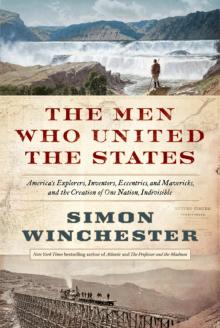 The Men Who United the States: America's Explorers
The Men Who United the States: America's Explorers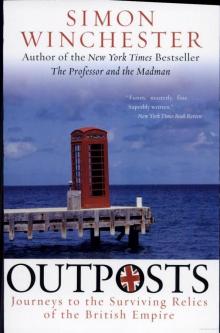 Outposts: Journeys to the Surviving Relics of the British Empire
Outposts: Journeys to the Surviving Relics of the British Empire Atlantic: Great Sea Battles, Heroic Discoveries, Titanic Storms
Atlantic: Great Sea Battles, Heroic Discoveries, Titanic Storms The Professor and the Madman: A Tale of Murder, Insanity
The Professor and the Madman: A Tale of Murder, Insanity A Crack in the Edge of the World
A Crack in the Edge of the World The Perfectionists: How Precision Engineers Created the Modern World
The Perfectionists: How Precision Engineers Created the Modern World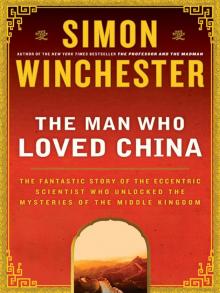 The Man Who Loved China: The Fantastic Story of the Eccentric Scientist
The Man Who Loved China: The Fantastic Story of the Eccentric Scientist The River at the Center of the World: A Journey Up the Yangtze
The River at the Center of the World: A Journey Up the Yangtze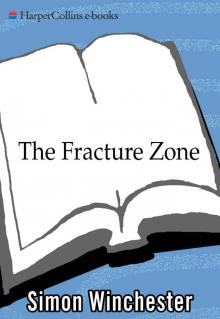 The Fracture Zone: My Return to the Balkans
The Fracture Zone: My Return to the Balkans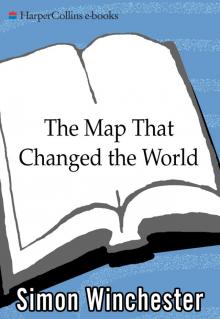 The Map That Changed the World
The Map That Changed the World Krakatoa: The Day the World Exploded
Krakatoa: The Day the World Exploded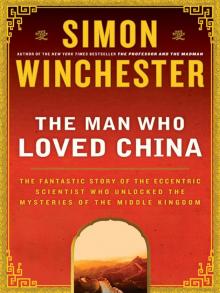 The Man Who Loved China
The Man Who Loved China The River at the Centre of the World
The River at the Centre of the World Bomb, Book and Compass
Bomb, Book and Compass The Perfectionists
The Perfectionists The Meaning of Everything
The Meaning of Everything Exactly
Exactly Atlantic
Atlantic Korea
Korea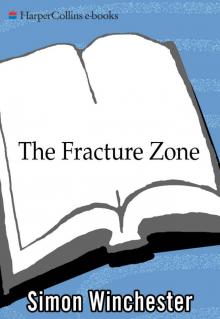 The Fracture Zone
The Fracture Zone Pacific
Pacific Krakatoa
Krakatoa The Professor and the Madman
The Professor and the Madman Outposts
Outposts